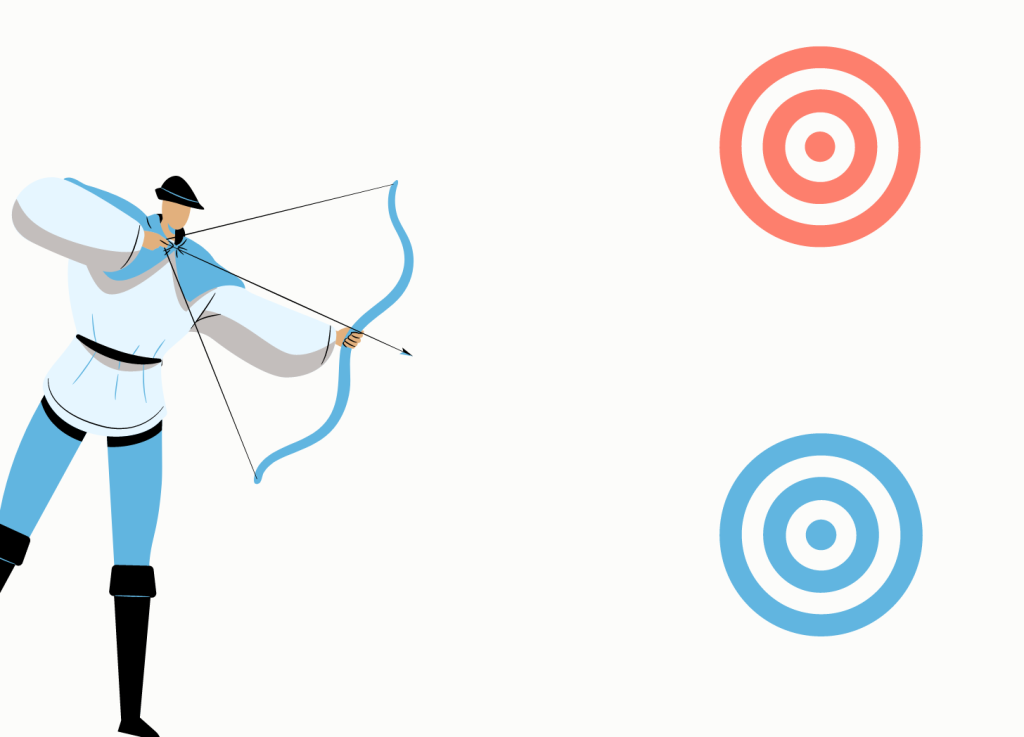Have you tried to do all this hard work of teaching the brain to feel safe at night, be non-judging to yourself, do a bunch of pleasant stuff during the night, be fearless, eliminate sleep efforts – and still find yourself struggling so much with your sleep?
Does it feel like literally everything that you do becomes an effort at some point and “stops working”?
I’ve been there, and so have many other people who struggled with insomnia. Seeing things not working out for us can demotivate, make us frustrated and doubt our inner abilities to sleep well. So if this is your case, this article can give you some insight!

Two general goals
All our behaviour is dictated by the goals we set for ourselves. Sometimes these goals are consciously selected, others – come from the subconscious desires and beliefs and are not obvious to the naked eye.
When we just start struggling with the fear of insomnia, our main goal becomes: ”fix this and make yourself sleep well.” However, due to the passive nature of sleep itself (we can’t fall asleep at will) that goal perpetuates sleeplessness. We try harder and sleep less as a result of trying.
The way out of this predicament is not by learning how to create sleep on cue (that’s physiologically unrealistic) but by helping ourselves view nighttime wakefulness not as an enemy but a friend, or at least something neutral. Once that perceptual shift happens, we feel safe at night, we stop trying and our hyperarousal goes down – and that creates the soil for effortless sleep.
So we need to view our journey not from the goal of getting what’s impossible to control but from becoming unattached to anything what the night brings.
No matter how many hours we sleep, what experiences happened to us at night, what emotions and thoughts arose – all is okay, all is allowed, all is welcome.
So there are two fundamentally different goals:
- Figure out how to get control over sleep > leads to more agitation, more efforts, more resistance.
- Become not attached to and be okay with any night’s outcome > leads to more peace, feeling safety and unblocks our natural sleep drive.
Paradigm shift
We tend to greatly underestimate the power of our goals, but see for yourself:
“I need to make sleep happen tonight. This can’t be my third sleepless night in the row.” Any decision from that place has a very big chance of turning into an effort. Even if you start doing the best practices ever, like accepting and listening to your emotions, doing so from the first goal’s perspective will lead to more frustration… because we expect that acceptance will make sleep happen. But acceptance is not working that way.
Let’s take the same example but change our goal here:
“I have been struggling with my sleep lately and I know where it comes from. My brain takes wakefulness for a danger and doesn’t want to go through another sleepless night. I understand that. It tries to warn me and take care of me– and that’s okay. I allow it to do its job. And in the meantime, let me see how I can help myself feel safe even if I experience sleeplessness.”
Now, any decision naturally arising from that place becomes beneficial, because it comes not from fear but from self-compassion. We are courageous and kind to ourselves while allowing the experiences to be as they are. And if we choose to practice listening to the emotions – now that practice has the power to transform our experience.
Recalibration
What’s also very common on the journey is that sometimes the goals can be replaced unconsciously and we begin to chase sleep again. That’s normal and very human. No need to punish yourself for wanting to sleep well – everyone does want that.
When we find ourselves stuck for a bit longer in the place of struggle, it makes sense to investigate our current goal and see if we can shift it back towards non-attachment. Because we might do everything right technically but with a different goal underneath, it creates a totally different side-effect!
How to switch from the unhelpful goal towards the helpful one
That’s tricky, I won’t lie. After all, the reason why we feel compelled to seek safety and try hard to sleep is because our inner safety system (our brain) perceives the absence of sleep as danger – and that process happens without our conscious control.
But the shift is not impossible! Education around sleep, anxiety and insomnia plays a tremendous role in that shift.
When we know why certain experiences like hyperarousal happen and we see them for what they are, these experiences lose their “wicked and mysterious powers” and we look at them differently than before. While before they might have been perceived as dangerous and scary (and we believed that), after demystification they appear harmless, content-less, impersonal and fleeting. They might be still unpleasant but, in their essence, they are safe.
Learning about and understanding insomnia can make it easier to let go of one goal and place the other instead, it can also be helpful in times when we need to recalibrate our goal back to being unattached.
Hope you found this article helpful. If you want to learn more about this, you might want to check out these articles:
Paradoxical solution to insomnia
How to stop being a perfectionist and start sleeping again